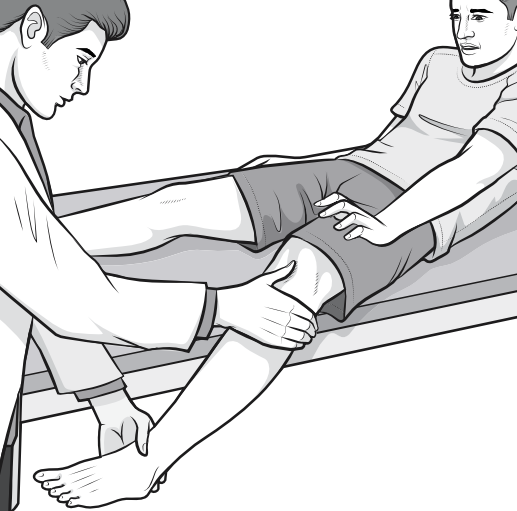The patellar apprehension test is performed to confirm the doctor's suspicion of an underlying patellar instability, such as patellar subluxation or dislocation.
 Page updated January 2024 by Dr Sheila Strover (Clinical Editor)
Page updated January 2024 by Dr Sheila Strover (Clinical Editor)

How to perform the patellar apprehension test
The patient lies face up on an examination couch, with the surgeon perched on the lower end, holding the patient's ankle with the foot off the couch and the knee flexed to 45 degrees. With the other hand the surgeon holds the patella between finger and thumb and, using moderate force, tries to push it laterally out of the groove of the underlying femur. A positive test is when the patient puts out a hand to stop this movement.
What is the value of a positive patellar apprehension test?
Because a patient may know that there is something wrong with the knee, but may have difficulty describing the incidents being experienced, this test helps the doctor to decide if patellar instability is playing a part in the symptoms.
Quick links
Peer-reviewed papers
-
Quote:
"...though the PAT can be used to provide a provisional clinical diagnosis of patellar instability, formal functional assessment and imaging should be performed to confirm the diagnosis."
Citation: Abelleyra Lastoria DA, Kenny B, Dardak S, Brookes C, Hing CB. Is the patella apprehension test a valid diagnostic test for patellar instability? A systematic review. J Orthop. 2023 Jul 13;42:54-62. doi: 10.1016/j.jor.2023.07.005. PMID: 37483643; PMCID: PMC10362729.